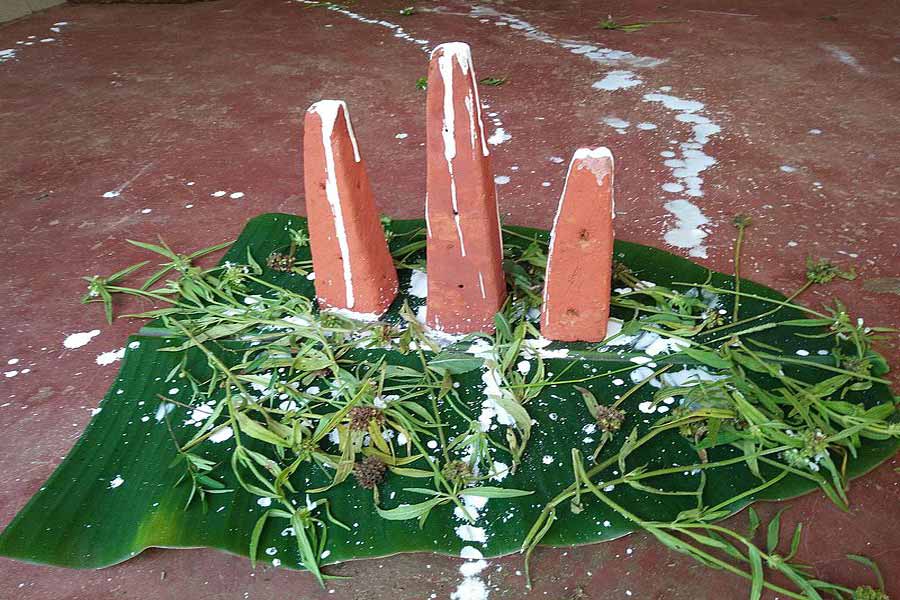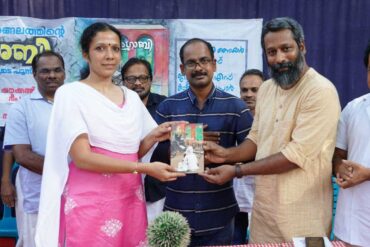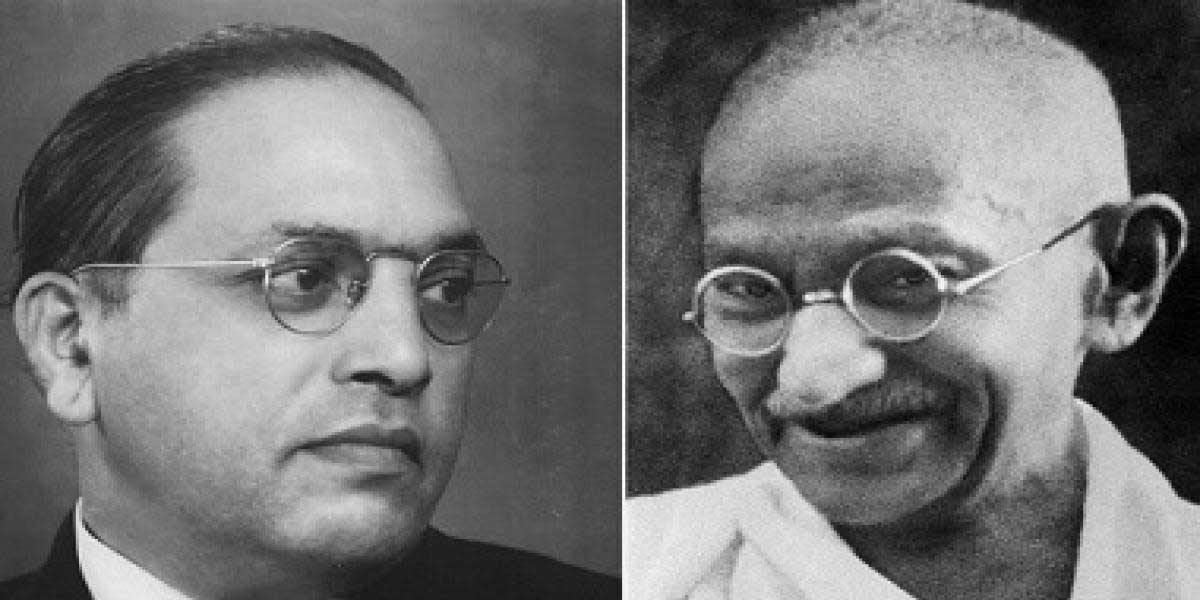Mahabali stands for the cultural lingering of the egalitarian Sramana (the ascetic tradition which gave rise to Buddhism and Jainism) among the people of various parts of India from Maharashtra to Kerala. Bali is the unconquerable spirit of equality and justice for the common folk. This ethical and egalitarian culture formed the foundation of the Bahujan or people’s culture of much of India.
It is interesting to note that the Bali myth is alive from Maharashtra to Kerala, regions of India that had enjoyed prolonged sea links with the rest of the world, especially with the Buddhist world. The legend speaks of Vamana’s triumph over Bali, which signifies the defeat of Buddhism by Vaishnavite Brahmanism in the early Middle Ages in India.
The ‘problem’ with Bali was that he was a just ruler and a leader of the people. He was known for charity and selflessness. The proponents of Brahmanism could not tolerate this humanitarian and ethical legacy of the Buddhist Bahujan ruler, and they used the ethical commitment of Bali to trample him down. It is also vital to remember that brahminical agents like Vamana were employed in this kind of usurpation throughout the Indian peninsula, especially in the southern kingdoms, to oust the Sramana rulers and to capture power.
The kingdoms of Mahishasura, Bali and Ravana are the other examples. It also brings us to the increasing demonisation of humans in the literary epics of Hindus from the early Middle Ages onwards. The apes, bears and other beasts of the Hindu epics are a case in point. Bali is a typical victim of demonisation.
In the narratives of Vaishnavite Brahminism, Bali was portrayed as a demon and referred to as an asura and a rakshasa who had to be eliminated. He is called an asura because he broke the Vedic varnashrama dharma (the caste system) stipulations by showing his compassion and munificence to the people at the bottom rung of society. He rose above varna and its caste/gender hierarchies—the double labyrinth called “brahminical patriarchy” by Ambedkar, Uma Chakravarti and Sharmila Rege.He became a threat to the varna and caste system, not to mention its rooted priestly ideology that is Brahmanism.
Kancha Ilaiah has pointed out the references to the buffalo in the media in the 21st century to demonize Lalu Yadav and Rabri Devi. The “buffalo demons” are easy preys of slaughter. The Buddhists in the Middle Ages and Muslims in the present have been otherized into demons or mleccha (barbarian people in Sanskrit) who too can be easily eliminated.
It was Mahatma Phule, in the mid-19th century, who envisioned the future India as Baliraj, the kingdom of Mahabali, where everyone is equal. He also compared it with Christuraj, the kingdom of Christ where god is love. Bali stands for selfless sacrifice and extraordinary standards of ethics. Here, we also need to remember that Phule was denied the Vedic Sanskritic gurukula education because he was a Shudra, and he received his education from a Scottish missionary school. He also educated his wife Savitribai, who went on to become modern India’s first female teacher. The couple pioneered schooling for the underprivileged, particularly for Dalit girls.
Narayana Guru, the visionary of Kerala’s modernity, himself an avarna or outcaste, also challenged the Vedic varnashrama dharma through his installations and educational endeavours for the Untouchables. He made it clear that “it is the British who gave us the right to education and asceticism, and they are our gurus. Otherwise, I would have met with the fate of Sambuka because the Hindus rule by the Manusmritis.”
In Kerala, the memories of Mahabali or Maveli are prominent among the people. It was Sahodaran Ayyappan, the disciple of Narayana Guru, who revived the memories of Maveli in the early 20th century through his songs. He wrote two poems Onapattu and Yuktikalam Onapattu to commemorate the liberating spirit associated with Maveli. He appeals to the people to embrace the rule of Mahabali:
Let us leave the ideology of Vamana
And regain the just rule of Mahabali
(Sahodaran Ayyappan in Onappattu)
This appeal is relevant in India today. Sahodaran Ayyappan explains the problems and consequences of the caste system. He pays homage to the medieval Dalit poet Pakkanar by invoking his lines on Maveli. Even before Sahodaran wrote these poems, it was Muloor, an older disciple of Narayana Guru, who paid tribute to Pakkanar and Pulayanar as early poets in the Kerala poetic tradition traced to the Sangam age.
He wrote: O learn from the old Pakkanar, or the old Pulayanar, my friend… Muloor Padmanabha Panicker also wrote Pulavritangal, an anthology of poetry, for his friend and Dalit reformer Kurumban Daivatan to use in his activism. He also translated Buddha’s Dhammapada from Pali into Malayalam.
The festival of Onam itself is held in the memory of Mahabali and not of Vamana, the Brahmin, who is an incarnation of Vishnu. We may also remember that a couple of years ago, BJP leader Amit Shah’s attempt to greet Keralites on “Vaman Jayanti” and not Onam was met with a backlash, although this is only the beginning of a long-term targeted propaganda to brahmanise the regional festivals and legends.
According to the popular legend, Maveli returns to see his people during Onam. The festival brings back the memory of an egalitarian age. If we study history, this is the age of Buddhism as far as Kerala is concerned. The floral carpet and associated paraphernalia of Onam represent the aesthetics of Buddhism that is ecologically aware and based on oneness of nature and culture. The stupa-like ritual, floral decorations, the yellow robes given as new clothes and the feasting on plantain leaves are in sync with the semiology and philosophy of Buddhism. The Malayalam month of Chingam, in which Onam falls, is named after Simham or Sakyasimha himself.

Sakyasimha or the Buddha is known as Chakyachinga in Kerala parlance. He is also called Onathappan, the lord of Onam. Appan is a Pali word of Tamil origin and has no relation to Sanskrit. Many of the Boddhisatvas in the Mahayana shrines were converted into Ayyappa, Muruka and Kannan as Bhakti fervour took hold of society during the Middle Ages. There is also a school of thought that Onathappan is Maitreya, the future Buddha.
When Brahmanism makes its second coming through cultural nationalism and hardcore Hindutva, let us remember and resist it with our deep-rooted legacy of ethics and enlightenment, firmly founded in compassion and non-violence. Let the people recover liberty, equality and fraternity by critically rejecting the ideology of Brahaminical patriarchy. Let Onathappan or Sakyasimha arise in each of us and, in the words of Ambedkar, let a thousand lotuses bloom in our hearts and the parched wetlands.
Cover Image: Sculpture of Mahabali and Vamana, Pic: Wikimedia Commons







